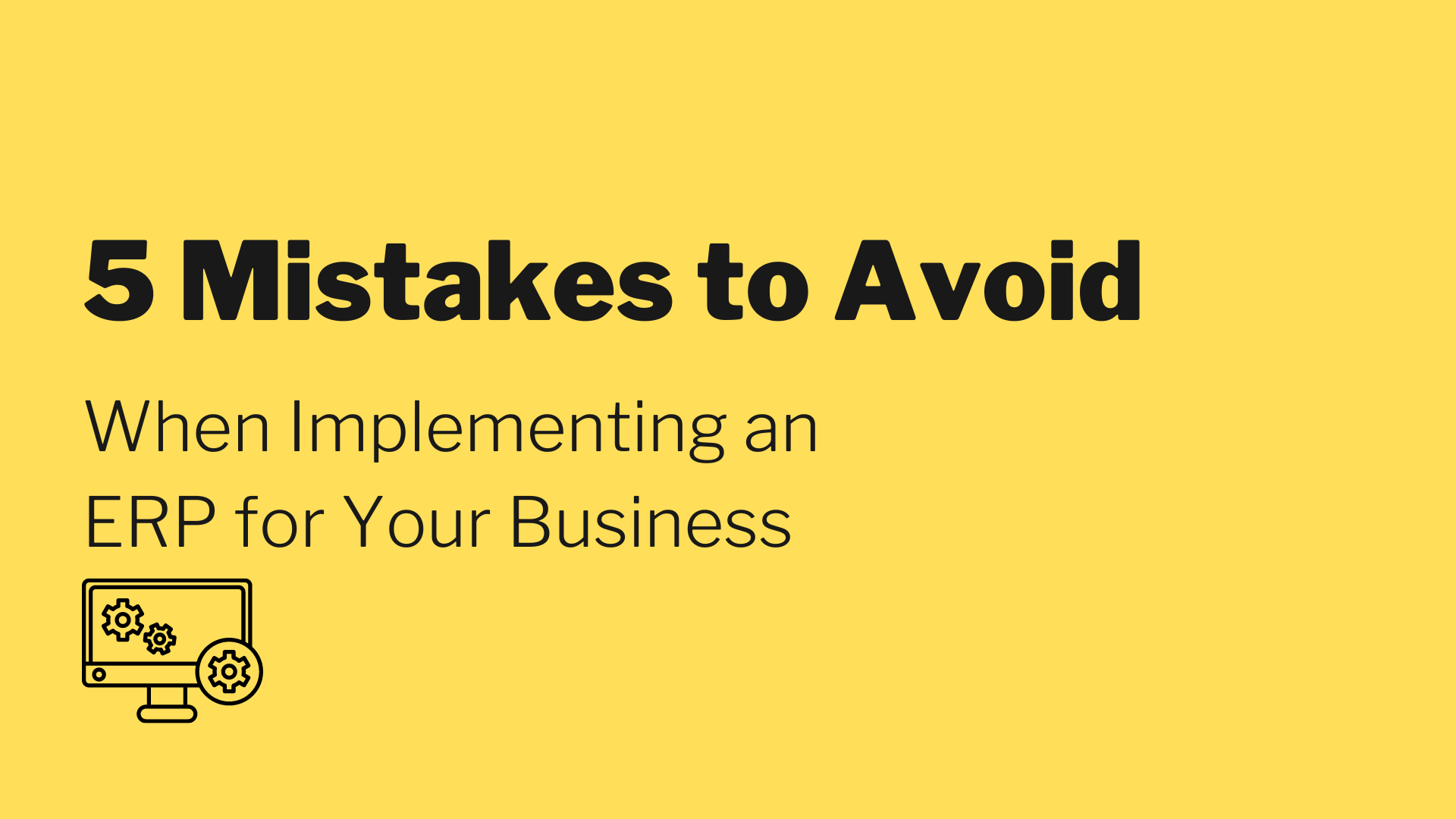Procurement plays a crucial role in the success of manufacturing companies. It encompasses the activities involved in sourcing, purchasing, and managing the raw materials, components, equipment, and services needed to produce goods.
This article covers the following:
- Understanding the Procurement Process
- Key Components of Procurement
- Different Approaches to Procurement
- Importance of Strategic Sourcing in Procurement
- Procurement in the Digital Age
- International Procurement
- Procurement Best Practices for Executive Success in Manufacturing
- How can Deskera assist you?
Understanding the Procurement Process
In today's fast-paced and competitive business landscape, effective procurement processes play a crucial role in ensuring the success and sustainability of organizations.
Procurement, the act of obtaining goods and services from external sources, encompasses a wide range of activities that require careful planning, execution, and management.
Understanding the Procurement Process
The procurement process can be defined as a systematic approach to acquiring goods and services in the most cost-effective and timely manner while adhering to quality standards and legal regulations. While specific procurement processes may vary across industries and organizations, the following stages are commonly involved:
Identification of Needs: The procurement process begins by identifying the organization's requirements, whether they are goods, services, or both. This step involves close collaboration between procurement professionals, end-users, and stakeholders to determine the precise specifications and quantity needed.
Supplier Selection: Once the requirements are defined, the next step is to identify potential suppliers who can fulfill those needs. This stage involves conducting market research, issuing requests for proposals (RFPs), and evaluating supplier proposals based on criteria such as price, quality, delivery capabilities, and overall supplier credibility.
Negotiation: Negotiation plays a critical role in securing favorable terms and conditions with suppliers. Procurement professionals engage in discussions with shortlisted suppliers to optimize pricing, payment terms, delivery schedules, and other contractual aspects. The objective is to strike a mutually beneficial agreement that meets the organization's requirements while mitigating risks.
Purchase Order: After successful negotiations, a purchase order (PO) is issued to the chosen supplier. A PO is a legally binding document that specifies the details of the purchase, including quantity, price, delivery dates, terms, and any other relevant information. It serves as a reference for both the buyer and supplier throughout the procurement process.
Receipt and Inspection: Upon delivery, the organization verifies the received goods or services against the specifications mentioned in the PO. This step ensures that the purchased items meet the expected quality standards. If any discrepancies or issues arise, they are promptly addressed with the supplier.
Invoice and Payment: After successful inspection, the supplier submits an invoice for payment. The procurement team verifies the invoice against the PO and delivery documentation before initiating payment. Timely payment processing is crucial for maintaining healthy supplier relationships and promoting a smooth procurement process.
Performance Evaluation: Continuous improvement is essential in procurement. Organizations evaluate supplier performance regularly to ensure they are meeting expectations and fulfilling contractual obligations. This evaluation helps in identifying areas for improvement, renegotiating contracts, or considering alternate suppliers if necessary.
To enhance the efficiency and effectiveness of the procurement process, organizations should consider implementing the following best practices:
Strategic Sourcing: Adopting a strategic approach to procurement involves analyzing spending data, identifying opportunities for consolidation and cost reduction, and building long-term relationships with strategic suppliers. By aligning procurement goals with overall business objectives, organizations can maximize value and drive competitive advantage.
Supplier Relationship Management: Establishing strong relationships with suppliers is vital. Regular communication, performance tracking, and collaborative problem-solving can help build trust and foster mutually beneficial partnerships. Maintaining an up-to-date supplier database and conducting periodic supplier assessments enable organizations to mitigate risks and optimize supplier performance.
Streamlined Procurement Technology: Investing in modern procurement tools and technologies streamlines processes, enhances transparency, and improves data accuracy. E-procurement systems, contract management software, and supplier relationship management platforms automate manual tasks, reduce errors, and enable better data-driven decision-making.
Contract Management: Robust contract management practices ensure compliance, minimize legal risks, and facilitate effective supplier relationship management. Standardizing contract templates, clearly defining terms and conditions, and implementing contract lifecycle management processes contribute to successful procurement outcomes.
Continuous Improvement: Embracing a culture of continuous improvement in procurement is crucial. Regularly assessing and benchmarking procurement performance, implementing lessons learned, and soliciting feedback from stakeholders help identify areas for optimization and promote efficiency gains.
Optimize Cost and Quality: Strategic procurement enables organizations to identify cost-saving opportunities, negotiate favorable terms, and ensure the quality of goods and services. By selecting reliable suppliers and implementing robust quality control measures, organizations can enhance product/service quality while managing costs effectively.
Mitigate Risks: Effective procurement processes help mitigate supply chain risks by diversifying suppliers, establishing contingency plans, and monitoring supplier performance. By proactively managing risks, organizations can safeguard their operations and ensure continuity.
Foster Innovation: Collaborating with suppliers can unlock innovation potential. Strategic procurement encourages suppliers to contribute ideas, expertise, and new technologies, leading to improved products, processes, and market differentiation.
Enhance Sustainability: Procurement plays a vital role in promoting sustainability initiatives. By evaluating suppliers' environmental and social practices, organizations can align their procurement decisions with sustainability goals, supporting responsible sourcing and reducing environmental impact
Key Components of Procurement
Procurement plays a vital role in the success of any organization. It encompasses the processes and activities involved in acquiring goods, services, and works from external sources.
To optimize procurement practices, it is essential to understand the key components that form the foundation of an effective procurement strategy. In this blog, we will explore the fundamental elements of procurement and their significance in achieving organizational goals.
Strategic Sourcing
Strategic sourcing involves identifying, evaluating, and selecting suppliers who can provide the required goods or services. It focuses on optimizing costs, quality, delivery, and supplier relationships.
By implementing a strategic sourcing approach, organizations can enhance their purchasing power, negotiate favorable contracts, and establish long-term partnerships with suppliers.
Supplier Management
Supplier management involves managing relationships with suppliers throughout the procurement process. It includes activities such as supplier selection, performance evaluation, contract negotiation, and ongoing supplier development. Effective supplier management ensures a reliable supply chain, reduces risks, and fosters collaboration for mutual benefits.
Contract Management
Contracts are the foundation of procurement agreements and outline the terms and conditions between the buyer and supplier. Contract management involves drafting, reviewing, negotiating, and monitoring contracts to ensure compliance, mitigate risks, and address any contractual issues that may arise. A well-managed contract framework promotes transparency, minimizes disputes, and protects the interests of both parties.
Purchase Order Processing: Purchase order processing refers to the creation, review, and issuance of purchase orders to suppliers. This component ensures clear communication of requirements, specifications, and quantities, helping to streamline the procurement process. Efficient purchase order processing minimizes errors, facilitates accurate tracking of orders, and enables effective inventory management.
Supplier Performance Measurement: Monitoring and evaluating supplier performance is crucial for maintaining quality standards and meeting delivery expectations. This component involves assessing supplier performance based on predefined metrics such as on-time delivery, product quality, and responsiveness.
By measuring supplier performance, organizations can identify areas for improvement, address performance issues, and build stronger relationships with reliable suppliers.
Risk Management: Procurement involves inherent risks such as supply chain disruptions, price fluctuations, and quality issues. Effective risk management involves identifying potential risks, developing mitigation strategies, and implementing contingency plans.
By proactively managing risks, organizations can safeguard their procurement processes, ensure business continuity, and minimize the impact of unforeseen events.
Ethical and Sustainable Practices: In today's socially conscious environment, ethical and sustainable procurement practices have gained significant importance. Organizations are increasingly focusing on procuring goods and services from suppliers who adhere to ethical standards, promote fair labor practices, and adopt environmentally sustainable approaches.
Integrating ethical and sustainable practices into procurement strategies can enhance brand reputation, attract customers, and contribute to a more sustainable future.
Different Approaches to Procurement
Traditional Procurement: Traditional procurement follows a sequential process, where each stage is completed before moving to the next. It typically involves the following steps: identifying needs, creating specifications, requesting bids or proposals, evaluating responses, negotiating contracts, and finally, awarding the contract to the selected supplier.
Strategic Sourcing: Strategic sourcing involves a more proactive and long-term approach to procurement. It focuses on identifying opportunities to improve value, reduce costs, and mitigate risks through a comprehensive analysis of the supply market. Strategic sourcing aims to build relationships with key suppliers and optimize the overall supply chain.
E-Procurement: E-Procurement refers to the use of technology and electronic platforms to streamline and automate procurement processes. This approach allows organizations to digitize their procurement activities, including requisitioning, supplier selection, purchasing, and payment. E-Procurement can increase efficiency, reduce paperwork, and provide better visibility into the procurement process.
Sustainable Procurement: Sustainable procurement, also known as green procurement or eco-procurement, considers environmental, social, and ethical factors when selecting suppliers and making purchasing decisions.
It involves assessing suppliers' sustainability practices, such as their environmental impact, labor conditions, and adherence to ethical standards. Sustainable procurement aims to support environmentally friendly and socially responsible business practices.
Just-In-Time (JIT) Procurement: Just-In-Time procurement focuses on optimizing inventory levels by receiving goods and materials exactly when they are needed in the production process. This approach minimizes inventory holding costs and reduces the risk of obsolescence. JIT procurement requires close coordination with suppliers to ensure timely delivery and relies heavily on effective supply chain management.
Collaborative Procurement: Collaborative procurement involves pooling resources and requirements with other organizations to achieve economies of scale and improve negotiating power.
It can take the form of consortiums, alliances, or partnerships, where multiple organizations work together to procure goods and services collectively. Collaborative procurement can lead to cost savings, knowledge sharing, and improved supplier relationships.
Outsourced Procurement: Outsourced procurement involves contracting with external procurement specialists or organizations to handle some or all procurement activities on behalf of a company.
This approach allows businesses to leverage the expertise and resources of procurement service providers, enabling them to focus on core competencies. Outsourced procurement can offer cost savings, access to specialized knowledge, and enhanced efficiency.
Category Management: Category management involves organizing procurement activities based on product or service categories rather than individual transactions.
It focuses on developing expertise and strategies specific to each category to optimize sourcing, supplier management, and cost-reduction efforts. Category management enables a more holistic approach to procurement and facilitates better decision-making.
Importance of Strategic Sourcing in Procurement
Today organizations strive to optimize their operations and enhance profitability. One critical aspect that plays a pivotal role in achieving these objectives is procurement.
Efficient procurement practices are essential for acquiring goods and services at the best possible cost, quality, and time. Within procurement, strategic sourcing stands as a cornerstone methodology that enables organizations to streamline their purchasing processes and maximize overall value.
Strategic sourcing can be defined as a systematic and proactive approach to procurement that involves analyzing, evaluating, and selecting suppliers based on their ability to meet the organization's specific needs and strategic goals.
It goes beyond simply focusing on price negotiation, encompassing broader considerations such as quality, reliability, sustainability, innovation, and supplier relationships.
By adopting a strategic sourcing mindset, organizations can optimize their purchasing decisions and establish long-term partnerships that add value to their supply chains.
Maximizing Cost Savings
One of the primary objectives of strategic sourcing is to drive cost savings. By conducting thorough market research, identifying potential suppliers, and engaging in competitive bidding, organizations can secure the best prices for goods and services.
This approach allows for better negotiation power, leading to significant cost reductions without sacrificing quality. Strategic sourcing also facilitates the identification of cost drivers within the supply chain, enabling organizations to explore alternative sourcing strategies and uncover innovative cost-saving opportunities.
Enhancing Supplier Relationships
Building strong and collaborative relationships with suppliers is vital for achieving long-term success in procurement. Strategic sourcing emphasizes developing strategic partnerships with suppliers, as opposed to engaging in transactional relationships.
This approach encourages open communication, joint problem-solving, and mutual trust, fostering a win-win situation for both parties. By nurturing these relationships, organizations can benefit from improved supplier performance, increased flexibility, and access to innovations or technologies.
Ensuring Supply Chain Resilience
In today's interconnected world, supply chain disruptions can have severe consequences on an organization's operations and bottom line. Strategic sourcing plays a crucial role in mitigating these risks by diversifying the supplier base and implementing robust contingency plans.
By mapping the supply chain, identifying vulnerabilities, and establishing backup suppliers or alternative sourcing options, organizations can enhance their resilience and minimize the impact of disruptions, such as natural disasters, geopolitical instability, or supplier failures.
Driving Operational Efficiency
Efficiency is a key driver of success in procurement. Strategic sourcing enables organizations to optimize their processes by standardizing specifications, implementing lean practices, and reducing unnecessary complexities.
By leveraging economies of scale, consolidating purchasing volumes, and implementing effective procurement technologies, organizations can achieve operational efficiencies and streamline their procurement activities.
This, in turn, frees up resources and allows procurement professionals to focus on more strategic activities that contribute to the organization's overall goals.
Encouraging Innovation and Continuous Improvement
Strategic sourcing encourages a proactive approach to supplier engagement, fostering innovation and continuous improvement. By involving suppliers in the early stages of product development or process improvement initiatives, organizations can tap into their expertise, knowledge, and technological advancements.
This collaboration promotes innovation, facilitates the exchange of ideas, and drives competitive advantage. Additionally, strategic sourcing incorporates ongoing supplier performance evaluation and feedback mechanisms, which enable organizations to identify areas for improvement and foster a culture of continuous enhancement.
Procurement in the Digital Age
In the digital age, technology has revolutionized nearly every aspect of our lives, and the world of procurement is no exception. Traditional procurement practices that relied heavily on manual processes and paperwork are being replaced by sophisticated digital systems that streamline operations, increase efficiency, and drive cost savings.
The Shift Towards Digital Procurement: Digital procurement, also known as e-procurement, involves the use of electronic platforms, software, and tools to automate and enhance the procurement process.
It encompasses activities such as sourcing, supplier management, purchasing, contract management, and payment processing. The shift towards digital procurement has been driven by several factors, including the need for greater efficiency, improved data analytics, and enhanced collaboration between stakeholders.
Benefits of Digital Procurement
Cost Savings: Digital procurement enables organizations to streamline processes, reduce paperwork, and eliminate manual errors, leading to significant cost savings. It enables businesses to negotiate better terms with suppliers, identify cost-effective alternatives, and optimize procurement strategies based on real-time data and insights.
Enhanced Efficiency: Automation and digitization of procurement processes eliminate time-consuming manual tasks, such as data entry, paperwork, and manual approvals.
This streamlines the entire procurement cycle, reduces cycle times, and enables procurement professionals to focus on strategic activities that add value to the organization.
Improved Supplier Management: Digital procurement systems provide organizations with comprehensive supplier management capabilities. They facilitate supplier discovery, evaluation, and qualification processes, ensuring that businesses engage with reliable and qualified suppliers.
Additionally, these systems enable real-time collaboration and communication with suppliers, enhancing transparency and fostering better relationships.
Data-Driven Decision-Making: Digital procurement platforms generate vast amounts of data that can be leveraged to gain valuable insights. Advanced analytics tools enable businesses to analyze procurement data, identify patterns, and make informed decisions. These insights help optimize procurement strategies, negotiate better contracts, and identify potential risks and opportunities.
Increased Compliance and Risk Mitigation: Digital procurement systems facilitate better compliance management by ensuring adherence to internal policies, industry regulations, and contract terms.
Automation of approval workflows and documentation processes reduces the risk of errors and non-compliance. Additionally, these systems provide visibility into supplier performance, allowing businesses to mitigate risks associated with supplier disruptions or non-compliance.
Key Technologies Driving Digital Procurement
Cloud Computing: Cloud-based procurement platforms offer scalability, accessibility, and cost-effectiveness. They allow businesses to access procurement tools and data from anywhere, collaborate with stakeholders remotely, and scale operations as needed.
Artificial Intelligence (AI) and Machine Learning (ML): AI and ML technologies are transforming procurement by automating manual tasks, improving data accuracy, and enhancing decision-making. These technologies can analyze large datasets, identify trends, predict demand, and optimize procurement processes.
Internet of Things (IoT): IoT devices enable real-time tracking and monitoring of goods and inventory levels. They provide valuable data on product usage, maintenance requirements, and supply chain visibility, enhancing procurement efficiency and supply chain management.
Blockchain: Blockchain technology offers secure and transparent transactions by providing a decentralized and immutable ledger. It can be used in procurement to track and verify the authenticity of goods, streamline payment processes, and ensure supply chain traceability.
Procurement Best Practices for Executive Success in Manufacturing
Procurement, encompassing the sourcing, purchasing, and management of goods and services, requires strategic thinking, meticulous planning, and a proactive approach.
Develop a Robust Procurement Strategy
To set the foundation for successful procurement, manufacturing executives must establish a clear procurement strategy aligned with the organization's overall goals and objectives.
This strategy should include factors such as cost management, supply chain optimization, risk mitigation, and supplier relationship management. By defining procurement priorities and objectives, executives can effectively communicate expectations to their procurement teams and drive focused efforts toward achieving desired outcomes.
Foster Strong Supplier Relationships
Building and nurturing strong relationships with suppliers is essential for efficient procurement in manufacturing. Engage in regular communication with key suppliers to understand their capabilities, capacities, and potential challenges.
Establishing open and transparent lines of communication helps foster collaboration, identify opportunities for innovation, and mitigate risks. Additionally, consider implementing supplier performance metrics to evaluate suppliers' adherence to quality standards, delivery timelines, and cost competitiveness.
Implement Strategic Sourcing
Strategic sourcing involves identifying the most suitable suppliers and negotiating favorable terms and conditions to optimize procurement outcomes. Manufacturing executives should invest time in researching and identifying potential suppliers, conducting thorough due diligence, and evaluating supplier capabilities against their requirements.
By implementing strategic sourcing practices, executives can secure reliable and high-quality supplies at competitive prices, reducing overall procurement costs.
Embrace Technology and Digital Tools
Incorporating technology and digital tools into procurement processes can significantly enhance efficiency and streamline operations. Manufacturing executives should explore e-procurement platforms, supplier portals, and other software solutions that facilitate automation, data analysis, and real-time tracking.
Leveraging technology can improve procurement visibility, facilitate informed decision-making, and simplify processes such as supplier onboarding, order placement, and invoice management.
Implement Effective Risk Management
Managing risks effectively is a critical aspect of procurement in the manufacturing sector. Executives should proactively identify and assess potential risks, such as supply chain disruptions, price volatility, and quality issues.
Develop contingency plans and alternative sourcing strategies to mitigate risks and ensure business continuity. Additionally, consider establishing a robust supplier qualification process to evaluate the financial stability, ethical practices, and compliance standards of potential suppliers.
Continuous Improvement and Performance Measurement
To drive excellence in procurement, manufacturing executives must foster a culture of continuous improvement. Regularly review and analyze procurement processes, identify bottlenecks, and implement necessary enhancements.
Encourage feedback from procurement teams and key stakeholders to gain insights into areas for improvement. Establish key performance indicators (KPIs) to measure procurement performance, such as cost savings, supplier performance, and procurement cycle time. Use data-driven insights to make informed decisions and drive continuous growth.
Invest in Talent Development
Building a skilled and competent procurement team is instrumental in achieving executive success in manufacturing. Invest in talent development programs, provide training opportunities, and promote cross-functional collaboration.
Encourage team members to stay updated with industry trends, market dynamics, and emerging procurement practices. By nurturing a knowledgeable and motivated procurement workforce, executives can drive innovation, adapt to market changes, and stay ahead of the competition.
How Can Deskera Assist You?
Deskera ERP and MRP system can help you:
- Manage production plans
- Maintain Bill of Materials
- Generate detailed reports
- Create a custom dashboard

Deskera ERP is a comprehensive system that allows you to maintain inventory, manage suppliers, and track supply chain activity in real-time, as well as streamline a variety of other corporate operations.
Deskera MRP allows you to closely monitor the manufacturing process. From the bill of materials to the production planning features, the solution helps you stay on top of your game and keep your company's competitive edge.
Deskera Books enables you to manage your accounts and finances more effectively. Maintain sound accounting practices by automating accounting operations such as billing, invoicing, and payment processing.
Deskera CRM is a strong solution that manages your sales and assists you in closing agreements quickly. It not only allows you to do critical duties such as lead generation via email, but it also provides you with a comprehensive view of your sales funnel.
Deskera People is a simple tool for taking control of your human resource management functions. The technology not only speeds up payroll processing but also allows you to manage all other activities, such as overtime, benefits, bonuses, training programs, and much more. This is your chance to grow your business, increase earnings, and improve the efficiency of the entire production process.
Related Articles:










